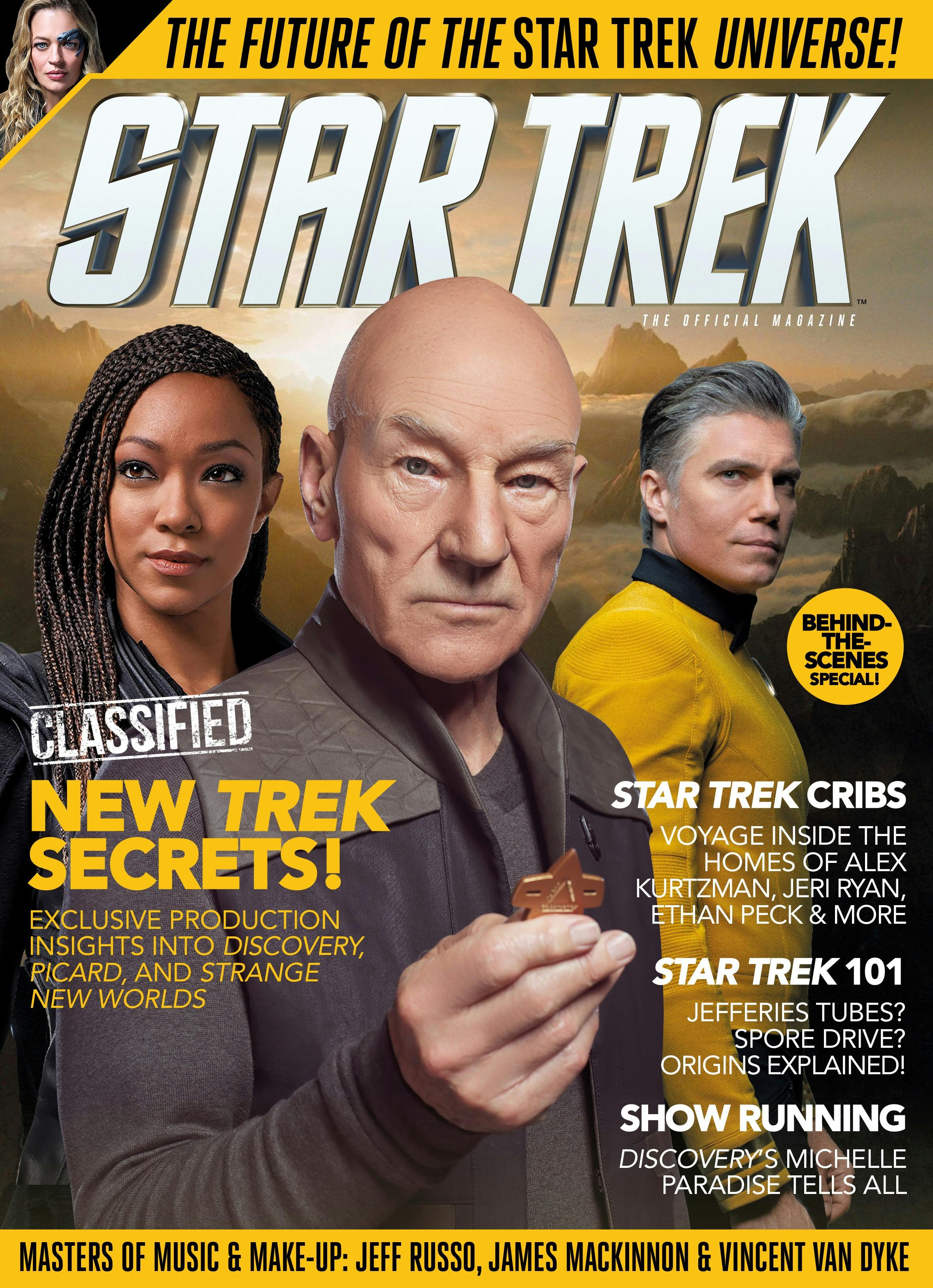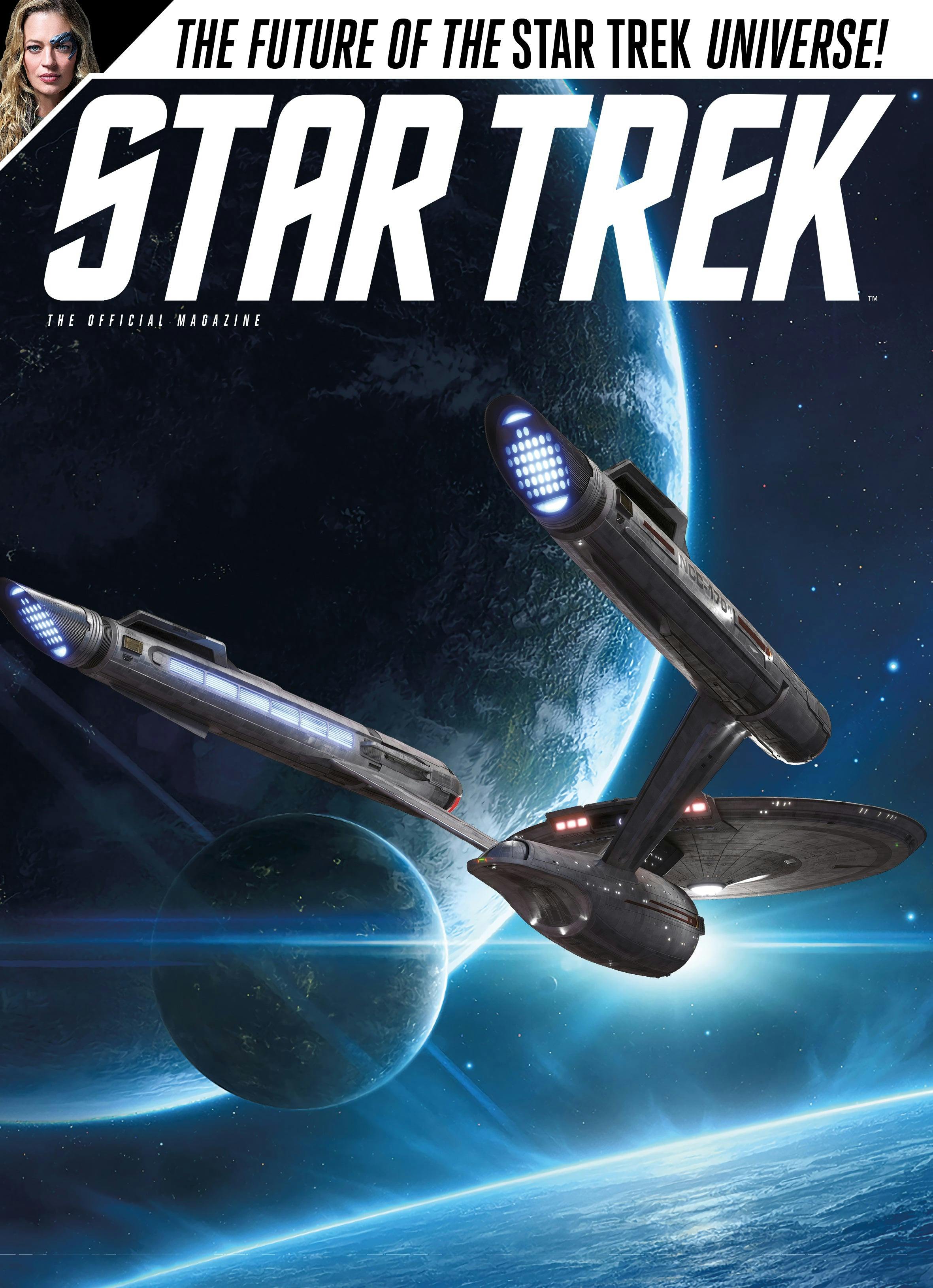Published Jan 12, 2023
Michelle Paradise Reflects on Producing a Star Trek Series
Go behind-the-scenes with Discovery's co-showrunner.

StarTrek.com
Joining any TV show as an executive producer partway through the second season would be a huge undertaking for anyone, but when that TV show is as complex as Star Trek: Discovery, the challenge is magnified tenfold. Not only did Michelle Paradise rise to that challenge, however, but she then became co-showrunner for Seasons 3 and 4.
In the February 2021 issue of Star Trek Magazine, Paradise took us behind-the-scenes on how Discovery honored the original series in Season 2 before striking out into a bold new future for the third season and beyond.

StarTrek.com
Star Trek Magazine: What did it mean to you to be named co-showrunner?
Michelle Paradise: It was awesome. I just go back to, “It’s Star Trek.” It was such an honor that Alex [Kurtzman] would ask, and so exciting to get to do that. I love the show. I love working with him. He’s a wonderful human being in the world and just an incredible creative force, and to work with him on this has been an absolute treat and a privilege.
We have such an incredible staff of writers, and incredible team in Toronto. Tunde [Olatunde Osunsanmi], our producing director, is amazing. Our department heads, our cast, everybody… it’s just really such an incredible group. And it does feel like a family. So, to be asked to help lead that and help guide that in some way, it’s a privilege and something that I take very, very seriously. I work very hard to live up to that responsibility every day and to help us all live up to, with this show, all the things that Gene Roddenberry started when he did the original series.
Star Trek Magazine: Many people may not fully understand what’s involved in a production as massive as Discovery. What do you feel would most surprise fans about what it takes to run a modern-day Star Trek show?
Michelle Paradise: I don’t even know where to begin. Running any show is a lot. It’s pretty consistently 80-hour weeks. I don’t know if it’s actually surprising, but there’s just the level of complexity, perhaps, the depth of thought and thoughtfulness that go into every decision that’s made. In the case of Seasons 1 and 2, we were in the future from here [2021], but in Season 3, we jumped ahead 930 years. What does that future look like? How do we portray that on screen? All of those decisions have to be thought through.
The logistics are really incredible of shooting a show of this size with six or seven sound stages and hundreds of people. It’s a very, very big show. There’s a lot that goes into that. We’re so fortunate to have a team of people who truly love, not just this show, but Star Trek itself, and are super-passionate about this world. Everyone is always ready and willing to dig in. And that’s really cool.
For what it’s worth, what I [also] want people to know is just that we really appreciate the viewers of this show and the people who are passionate about this show and passionate about Star Trek in general. We really pour our hearts into this and we hope that people feel that. We’re so appreciative of the support.
Star Trek Magazine: What did you and the production team see as your “mission statement” for Season 3 of Discovery?
Michelle Paradise: There are a couple of different ways to answer that. I think, in terms of the look and feel of things, we definitely wanted to honor that this is Star Trek and it needed to feel like Star Trek, even though we were going so far into the future. At the same time, still honoring that, what does the future look like in 930 years? How does it feel? What are the new things that we see? What are the new technologies? Who are the alien species? How do the aliens we are familiar with change or shift alliances, or whatever that may be, 930 years later? So, there are all of those things.
And then in terms of storytelling, it felt like in Season 2, and toward the end of Season 2, we really started to find our groove in terms of tone and character and those sorts of things. For Season 3, we really wanted to make sure that we kept that tone so that we have the fun exploration stuff and the adventure, that there’s always science, and that we’re also honoring each of our characters and their growth and emotional moments – the things that our audience has come to love about the characters.

StarTrek.com
Star Trek Magazine: In Season 2, fans saw the Enterprise, Spock, Number One and so on. This past season, they saw the U.S.S. Voyager and also the image of Leonard Nimoy’s Spock. How much debate or conversation goes into the throwbacks to canon from previous shows and movies, and whether they’re quick Easter eggs or important story developments?
Michelle Paradise: Oh, we’re very conscious about things like that. We’re very thoughtful – and those ideas, by the way, they come from all sorts of different places. Sometimes they come from the writers’ room. Sometimes they come from our production team. Sometimes they come from our VFX team or our post team. Again, the people who work on this show love Star Trek and they know their canon. So, the opportunity to have a Voyager-class ship, or [specifically] the Voyager, of course we would do that to pay homage in some way to the series and the characters that have come before. It’s not like every episode is about that, obviously, but when we can do those sorts of things, we like to when it makes sense. We wouldn’t just do that.
Star Trek Magazine: How would you say the finale wrapped up Season 3 and paved the way for Season 4?
Michelle Paradise: Well, I think the finale is… I’m super happy with it. I’m really happy with how it turned out. I think we certainly wanted to wrap up the big mysteries of the season. So, we have an answer to the Burn. We know what that was. We know where it came from. We know that it is not going to happen again. One thing we always want to do every season is wrap up our big season mystery. And then, we ended with Burnham as captain. What does that mean moving forward? I think that’s what people are going to be excited for this season to come, is getting to see what that looks like and what her adventure to come is. I’m excited to see that. I mean, I could tell you, but I won’t!
Star Trek Day 2020 | Michelle Paradise On The Blank Slate Of Discovery's Future
Read the rest of the interview and much, much more in Star Trek Magazine #79.
This article was originally published on February 5, 2021.
Star Trek: Discovery Seasons 1-4 are currently streaming exclusively on Paramount+ in the U.S. Internationally, the series is available on Paramount+ in Australia, Italy, Latin America, the U.K. and South Korea, as well as on Pluto TV in Austria, France, Germany, Italy, Spain and Switzerland on the Pluto TV Sci-Fi channel. It will also stream exclusively on Paramount+ in Italy, France, Germany, Switzerland and Austria later this year. In Canada, it airs on Bell Media’s CTV Sci-Fi Channel and streams on Crave. STAR TREK: DISCOVERY is distributed by Paramount Global Content Distribution.
Stay tuned to StarTrek.com for more details! And be sure to follow @StarTrek on Facebook, Twitter, and Instagram.

